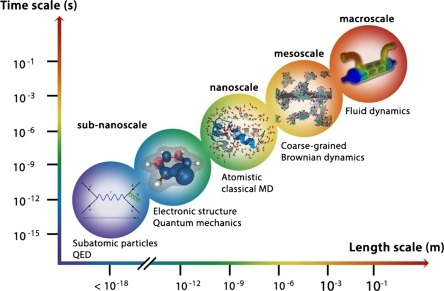Research interests
My research interests are focused on the computational chemistry field, a research area that I personally find very versatile, since it allows the study of a wide range of chemical systems by means of computer simulations.

Computational chemistry comprises different types of approaches such as coarse-grained models, classical molecular dynamics (MD), semi-empirical simulations and ab initio quantum chemistry methods. Every method can assess a specific size and time scale of a system, providing different levels of accuracy.
My current research activity is specially focused on the study of chemical systems at atomistic level, using different theoretical techniques such as:
- Classical and ab initio MD
- Replica exchange simulations
- Enhanced sampling techniques (e.g. metadynamics, umbrella sampling)
- Electronic structure calculations
Exploiting these methods, I have been working specially on:

